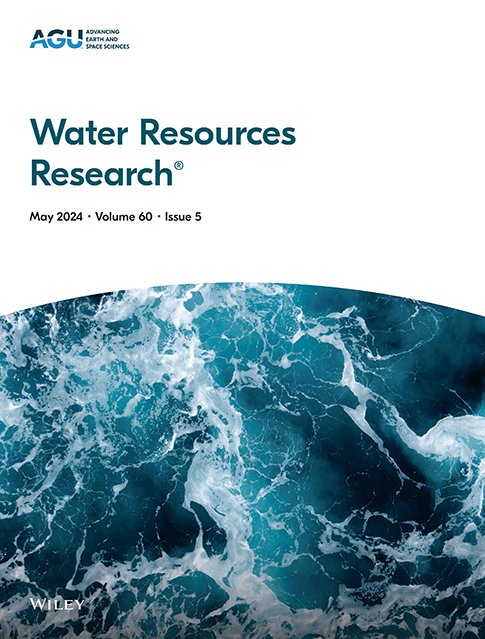Classifying Flash Flood Disasters From Disaster-Prone Environments to Support Mitigation Measures
IF 5
1区 地球科学
Q2 ENVIRONMENTAL SCIENCES
引用次数: 0
Abstract
Spatiotemporal heterogeneities in climatic, physiographic, and socio-economic environments cause complex and varied formation mechanisms in flash flood disasters. However, previous studies were usually conducted at event or catchment scale in specific environments. Investigation on disaster formation mechanisms in climatic, physiographic, and socio-economic environments with different combinations and quantities at large scale is not available, which further affects the decision-making of mitigation measures. Our study develops a type-based analytical framework of flash flood disasters and their causes from disaster-prone environments using ten-fold multivariate analysis including cluster analysis, analysis of similarities, and ordination analysis. Application of this framework to environment factors and losses of 37,332 disaster events across China revealed three disaster-prone environment types, contributing 55.5% ± 0.3%, 55.9% ± 0.3%, and 50.9% ± 0.2% to variations in disaster attributes, respectively. The events with low disaster intensities (24.6%) in undeveloped northwestern China were governed by short rainfall, low retention capacity, and low prevention investments, and their mitigation focused on afforestation and construction of rainfall and flash flood monitoring systems. Those with high disaster intensities (38.5%) in developed and disturbed central and southeastern China were interpreted by frequent intense rainfall and good flood prevention infrastructures, and their mitigation prioritized development of flash flood forecasting warning models, and grain for green, etc. Those with intermediate disaster intensities (36.9%) in undeveloped southwestern and central China were shaped by frequent short intense rainfall and steep rivers, and their mitigation required satellites or radars in alpine regions, multi-disaster prevention technology development, and dam construction.对灾害频发环境中的山洪灾害进行分类以支持减灾措施
由于气候、地理和社会经济环境的时空异质性,导致山洪灾害形成机制复杂多样。然而,以往的研究通常是在特定环境的事件或流域尺度上进行的。没有对不同组合和数量的气候、地理和社会经济环境的灾害形成机制进行大规模调查,这进一步影响了减灾措施的决策。本研究利用聚类分析、相似性分析和协调分析等十倍多变量分析,构建了基于类型的暴洪灾害及其成因分析框架。将该框架应用于中国37,332起灾害事件的环境因素和损失,揭示出三种易发环境类型,对灾害属性变化的贡献率分别为55.5%±0.3%、55.9%±0.3%和50.9%±0.2%。西北欠发达地区灾害强度较低(24.6%)的事件主要表现为降雨少、保水能力低、预防投资少,主要以植树造林、建设降雨和山洪监测系统为主。中国中部和东南部发达和受干扰地区灾害强度高的地区(38.5%)以频繁的强降雨和良好的防洪基础设施来解释,其减灾优先发展山洪预报预警模型和退耕还林等。中等灾害强度(36.9%)分布在欠发达的西南和中部地区,受频繁的短时强降雨和陡峭河流的影响,其减灾需要高寒地区的卫星或雷达、综合防灾技术的发展和大坝建设。
本文章由计算机程序翻译,如有差异,请以英文原文为准。
求助全文
约1分钟内获得全文
求助全文
来源期刊

Water Resources Research
环境科学-湖沼学
CiteScore
8.80
自引率
13.00%
发文量
599
审稿时长
3.5 months
期刊介绍:
Water Resources Research (WRR) is an interdisciplinary journal that focuses on hydrology and water resources. It publishes original research in the natural and social sciences of water. It emphasizes the role of water in the Earth system, including physical, chemical, biological, and ecological processes in water resources research and management, including social, policy, and public health implications. It encompasses observational, experimental, theoretical, analytical, numerical, and data-driven approaches that advance the science of water and its management. Submissions are evaluated for their novelty, accuracy, significance, and broader implications of the findings.
 求助内容:
求助内容: 应助结果提醒方式:
应助结果提醒方式:


